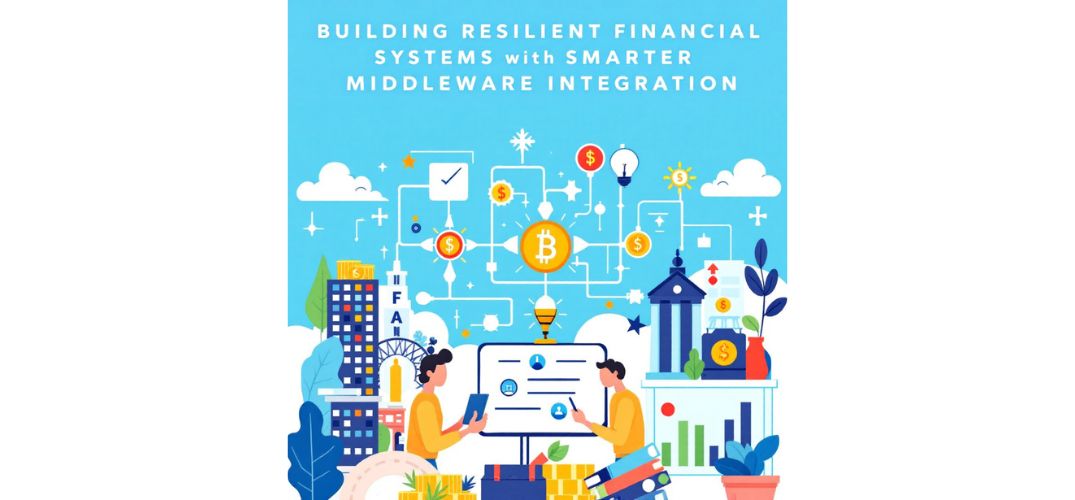Jyothi Siva Rama Krishna Terli, a seasoned technologist in enterprise infrastructure, presents a forward-looking framework for middleware integration that addresses the evolving complexities of modern financial services. This article distills his comprehensive insights into how middleware is transforming the speed, safety, and intelligence of banking operations.
The Silent Engines of Financial Transactions
Modern financial institutions rely on middleware not just as connective tissue between applications but as the nervous system of their digital operations. What began as simple message-oriented services has matured into intelligent, enterprise-grade middleware platforms. These now handle mission-critical tasks like real-time payments, fraud detection, and compliance monitoring, processing millions of messages daily.
From fault-tolerant queuing systems to streaming engines, four dominant platforms have emerged—each optimized for a specific use case. While some enable secure interbank transfers, others power high-frequency trading or integrate complex trading floor operations. Collectively, these technologies ensure seamless and reliable transactions across the global financial ecosystem.
Precision under Pressure
Financial middleware is built for ultra-high performance, scalability, and security, with availability levels of 99.999%. Innovations like high-availability clusters, message deduplication, and encryption ensure reliability. Regulatory compliance drives features such as detailed transaction logging, audit trails, and real-time AML monitoring, making middleware a critical enforcer of financial integrity.
Matching Technology to the Task
Technology selection in financial middleware is no longer one-size-fits-all. Each platform offers unique architectural strengths aligned to different operational requirements. Systems demanding absolute transactional integrity, like core banking, lean on message-queuing platforms with exactly-once guarantees. Meanwhile, high-volume trading or risk analytics require the real-time processing and scalability of event-streaming platforms.
Flexible platforms that support advanced message routing are favored in microservices environments where responsiveness and customization matter more than throughput. And end-to-end integration suites are gaining traction for their ability to orchestrate everything from market data ingestion to settlement processing within a unified framework.
Architectural Innovation for Message Mastery
Modern financial systems rely on event-driven architectures for low-latency, loosely coupled communication. Real-time event propagation and asynchronous messaging via brokers enhance trading platform efficiency. To ensure reliability, systems use primary-key constraints, idempotency tokens, and persistent logs to prevent duplication and guarantee delivery, even during outages.
Fortifying Infrastructure for Zero Downtime
Resilience isn’t optional in finance—it’s foundational. Middleware implementations now deploy multi-layered strategies to ensure business continuity. High-availability clusters with N+1 redundancy minimize the risk of single points of failure. When disasters do strike, detailed recovery plans with alternate sites and prioritized restoration steps come into play.
Failover mechanisms, often active-active, ensure operations can switch seamlessly between nodes without losing data. Load balancing strategies optimize performance during trading surges, while real-time monitoring systems use predictive analytics to flag potential issues before they escalate—ushering in a new era of proactive system maintenance.
Real-Time Intelligence at Scale
Middleware has evolved into a real-time analytics engine, powering tasks like trade execution, risk assessment, and liquidity forecasting across globally distributed financial systems. With AI integration, it now enables advanced fraud detection by combining rule-based logic with neural networks to identify anomalies in real time and adapt to emerging threats with greater precision and speed.
Shaping the Future of Middleware
Financial middleware is poised for yet another leap. The industry is exploring blockchain integration for cross-party transaction validation and cloud migration for dynamic scalability. Interoperability standards and message pattern standardization are reducing the friction of system integration, enabling faster innovation.
AI and machine learning are transforming middleware into intelligent orchestration layers. Middleware now optimizes message routing, predicts system failures, and translates unstructured data. This shift promises a future where middleware evolves from being infrastructure to becoming a strategic decision-making tool embedded in financial operations.
In conclusion, Jyothi Siva Rama Krishna Terli presents a compelling vision of how middleware has transitioned from a behind-the-scenes facilitator to a cornerstone of financial innovation. His insights reveal how tailored technology choices and resilient design are enabling secure, scalable, and intelligent financial systems. As the digital finance landscape expands, middleware will remain the critical framework powering its evolution—connecting systems, ensuring compliance, and enabling real-time intelligence with unmatched precision.





























